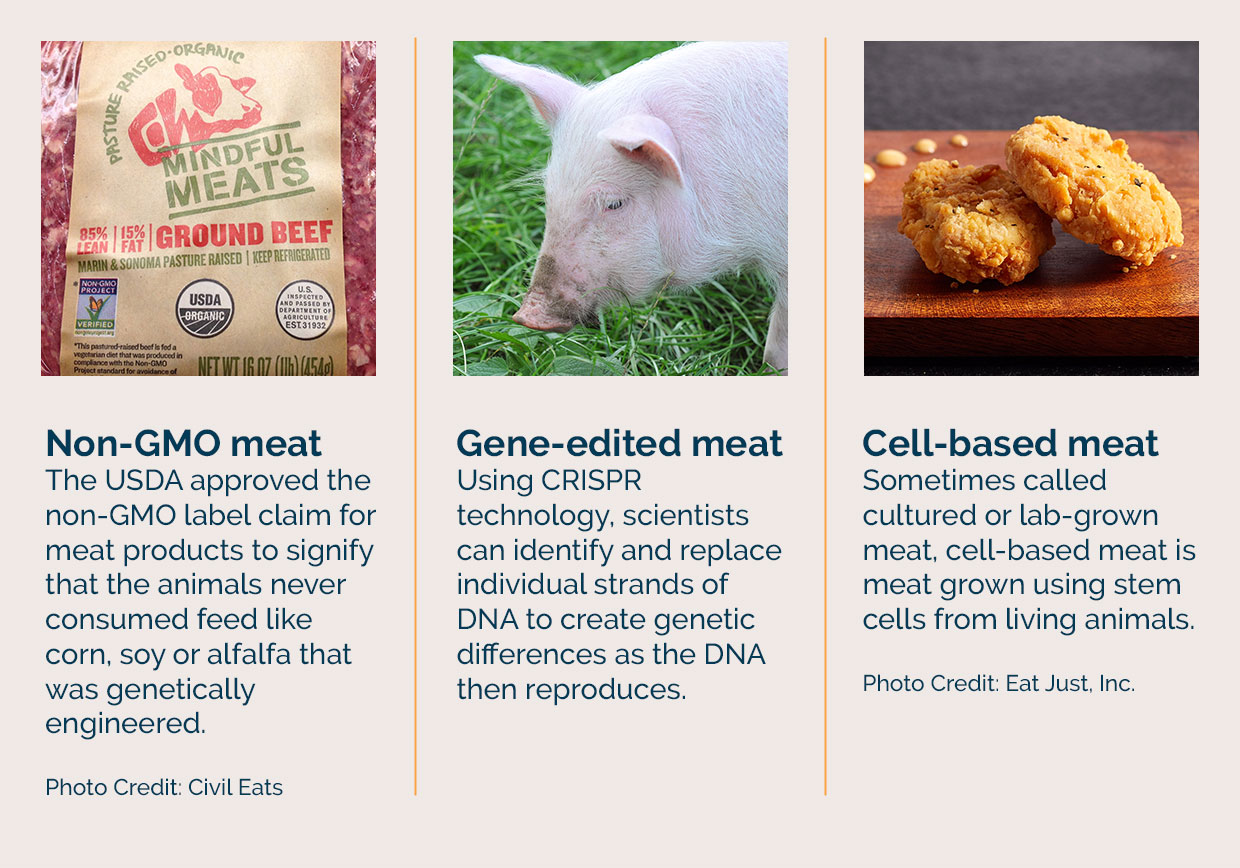A short time ago in a land not so far away, when you went to the grocery store to buy meat, you could reasonably assume everything in the meat case was made from responsibly harvested livestock and that the ingredients list would include, well, meat. USDA grades and claims entered the scene but at its core, you were still eating something easily defined as meat. Today, food technology has advanced to a point where the definition of “meat” is a bit fuzzier than it once was. As Midan Marketing learns more about how meat consumers approach the technologies redefining meat, we also wanted to help get our readers up to speed.
Believe it or not, I’m not writing about plant-based meat alternatives today. While they are the product currently making waves in the meat case, they’re far from the most interesting technological advancement happening. Non-GMO meat, gene-edited meat and cell-based meat are the products of tomorrow that we need to work toward understanding today.

It’s important to remember that GMO isn’t a dirty word. We have, in the most basic ways, been genetically altering crops and animals for all of time. We’ve just been calling it “selective breeding.” Choosing two specimens with desirable features and mating them to bring the best of each specimen is, in fact, a way of modifying their genes for future generations. When it comes to GMOs, we are talking about taking a segment of DNA from one organism and adding it to an organism of a different species for a specific purpose. The most common GMO, corn, for example, was created to resist insect pests and tolerate herbicides. The goal was to make corn that provided a better yield and was easier to grow.
This brings us to gene-edited meat. This is not a product currently available anywhere, but research is being done around the world. Using CRISPR (clustered regularly interspaced short palindromic repeats) technology, scientists can identify and replace individual strands of DNA to create genetic differences as the DNA then reproduces. Some of the research being done in this area today includes creating virus-resistant pigs, heat-tolerant cattle, and lambs with more muscle. Just like with GMO crops, the end goal of this research is to make it easier and less expensive to raise healthier animals with higher yields.
If/when cell-based meat is widely available, genetics could become the most important aspect of animal agriculture. Rather than breeding and raising animals in mass numbers, the goal will be to manipulate the genetics of animals so the stem cells taken from them produce the best meat product possible.

